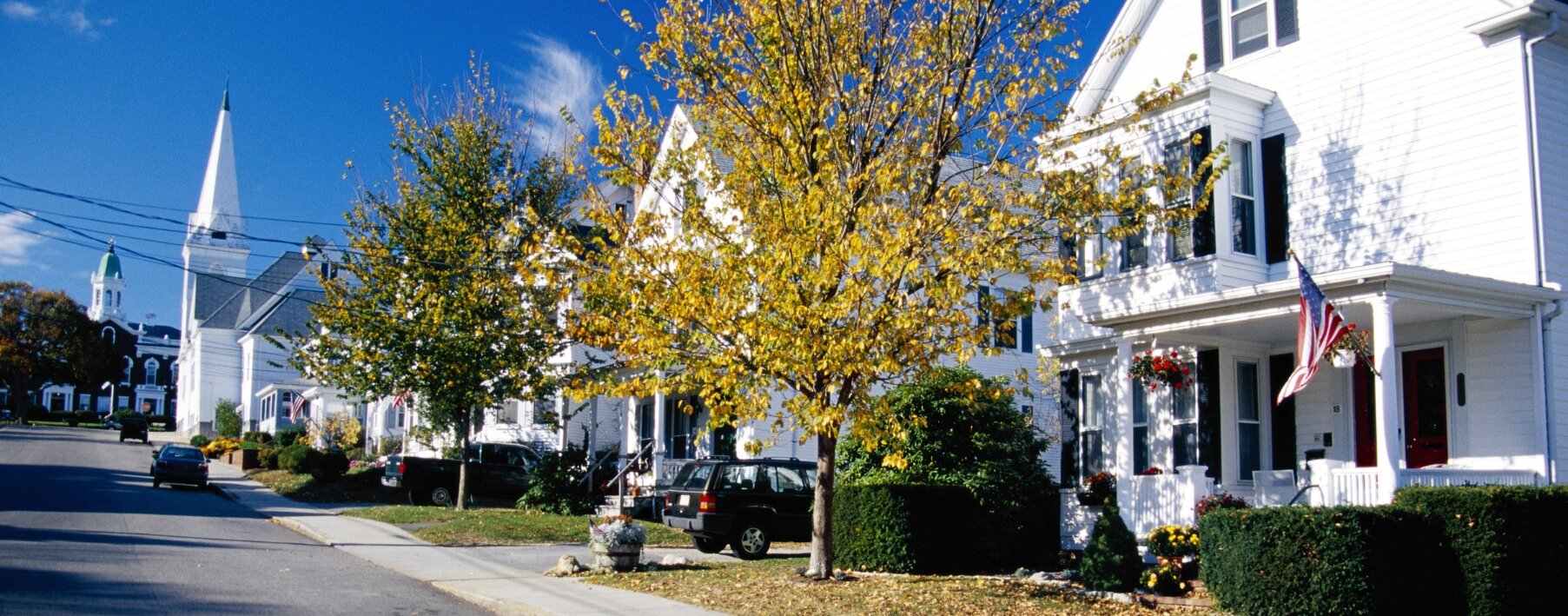Securing Flood Insurance for Your Home [Rising Waters]

Did you know floods are the most common and expensive natural disasters in the U.S.? Surprisingly, many homeowners don't realize their standard homeowners insurance won't cover them if a flood strikes. Flood insurance is what will give you comprehensive protection against it.
99% of U.S. counties experience flooding, yet only a small percentage of homeowners have homeowners' flood insurance. So, in case of a flood, the financial fallout can be huge.
This means you'll be left high and dry in a watery situation if a flood strikes. Sounds terrible, right?
This guide will go over how flood insurance policies work, what they cover, and why you should have this basic defense in place to protect your house.
Key takeaways
- Flood insurance is essential for protecting your home from flood damage.
- Coverage includes both building and contents but varies between policies.
- Understanding your flood risk and choosing the right policy is crucial.
- Flood insurance can be obtained through the NFIP or private insurers.
- Costs and coverage limits depend on your property's location and risk.
What is flood insurance?
Flood insurance is a type of property insurance that covers your home against water damage from flooding. There can be various reasons behind this flooding, like heavy or long-lasting rain, melting snow, storm surges along the coast, clogged storm drains, or the failure of a levee dam.
Floods are not typically included in standard homeowners insurance policies. It's essential to obtain a separate policy through a flood insurance agency. Flood insurance is your shield against financial woes caused by floods.
It covers both your home's structure and everything inside it. You can get flood insurance through the National Flood Insurance Program (NFIP) or private insurers. They offer various coverage options and prices. Simply put, home insurance for floods keeps your home safe and your wallet happy.
How does flood insurance work?
Flood insurance is like a financial lifeline for homeowners facing the daunting prospect of flood damage. You, the property owner, pay an annual premium based on your property's flood risk and the deductible you choose. The deductible is what you pay out of pocket before your insurance activates. Opting for a higher deductible usually means lower monthly premiums and vice versa.
If a flood damages your property or its contents, your flood insurance policy covers the cost to repair or rebuild up to the policy limit. Whether it's structural damage or ruined belongings, you're financially protected against the unpredictable forces of nature.
Unlike standard homeowners insurance, flood insurance requires separate policies for your home's structure and contents. If you need coverage for sewer backup that isn't directly caused by floodwaters, you'll typically need an additional rider. This ensures you're covered comprehensively for both the expected and unexpected challenges that come with living in flood-prone areas.
What does flood insurance cover?
Flood insurance covers buildings and contents, providing a financial safety net against flood-related damage. However, it's important to note that flooding insurance does not include loss of use coverage, which includes coverage of additional living expenses if you need to live elsewhere while your home is being repaired. For that kind of protection, you'll need to look into other insurance options.
Building coverage
Building coverage includes the structure of your home and its foundation, as well as electrical and plumbing systems, HVAC equipment, and permanently installed fixtures, such as cabinetry and built-in appliances. Flood coverage insurance limits for building damage vary, but NFIP policies typically provide up to $250,000 in coverage.
Contents coverage
Contents coverage protects your personal belongings, including furniture, electronics, clothing, and other items. It also covers items stored in basements, such as washers, dryers, and freezers. NFIP policies offer up to $100,000 in content coverage. Unlike homeowners insurance deductibles, which apply to your overall home insurance policy, this contents coverage is optional and must be purchased separately.
What does flood insurance not cover?
Although flood insurance offers important coverage outside your homeowners' policy, it usually does not cover specific objects or circumstances. Typical exclusions from home flood insurance coverage are:
- Patios, outdoor decks, fences,
- Hot tubs and swimming pools
- Individual belongings maintained in basements
- High-value objects like jewelry, cars, trucks, or heirlooms
- Money and other important documents
- Living expenses incurred while your home is being repaired
- Damage resulting from mildew and mold, unless specifically related to the flooding itself
- Assets like landscaping and septic systems outside of the insured property
Do I need flood insurance?
Whether you need flood insurance depends on your property's location and risk level. A Swiss Re poll reveals a typical error among homeowners: Forty-three percent think their house insurance will cover flood damage. Standard home insurance does not cover flood damage. So, if you are worried about floods, consider flood insurance.
Also, having flood insurance may be a legal requirement in certain cases. For instance, you will need flood insurance if you live in a high-risk storm area and own a residential or commercial property with a government-backed mortgage.
While flood home insurance can be too expensive for some people, obtaining it can save you a lot of trouble in case of a disaster. It will help you avoid having to completely wipe out your savings or borrow money to rebuild immediately.
Moreover, some people rely on government funding in case of disaster. However, depending on federal disaster funding following a flood is not a wise financial strategy because not every flood receives disaster assistance. Even if it does, the process might take months.
Without insurance, disaster victims often rely on funding from the Small Business Administration (SBA) Disaster Loan Program. SBA loans can give people up to $500,000 to fix their primary dwellings. Homeowners and renters can also get up to $100,000 to replace or repair personal items (like furniture). You have to repay the loan, even though the interest rates are low and the terms can be very long, like 30 years.
FEMA reports that around 20% of flood insurance claims come from properties outside high-risk areas.
Additionally, if you live in a hurricane-prone area, consider hurricane insurance. This type of policy covers damages caused by hurricanes, including high winds and storm surges. While some homeowners policies might cover wind damage, they often exclude damage caused by hurricane-induced flooding, making a separate flood insurance policy essential. Having both types of insurance ensures comprehensive protection against the unique threats posed by hurricanes and floods.
How much flood insurance do I need?
The amount of home insurance with flood coverage you need depends on the value of your home and its contents. If you own or rent a home in a high-risk flood area, ensure your flood insurance covers the full value of your home and possessions.
Calculate the rebuild cost of your home, considering factors like size, material quality, and labor. Assess the total value of your personal property inside your home.
NFIP limits are $250,000 for building structures and $100,000 for personal property, with certain caps for valuables. If these limits are insufficient, consider private flood insurance, which may also cover additional living expenses.
Consult with an insurance agent to determine the appropriate coverage levels for your specific situation. Also, enquire about a quote for flood insurance in your particular case.
How much does flood insurance cost?
Flood insurance costs vary widely based on several factors:
- Location: Homes in high-risk flood zones generally have higher premiums.
- Flooding History: If your home has a history of flood damage, expect to pay more.
- Elevation: Higher elevation can mean lower premiums due to reduced flood risk.
- Deductible: Choosing a higher deductible can lower your premium but means more out-of-pocket costs if you make a claim.
- Construction: The materials and construction type of your home influence insurance rates.
- Coverage Limits: More coverage means higher premiums. Evaluate how much protection you need to find the right balance.
On average, NFIP policies cost around $700 per year, but premiums can be higher for homes in high-risk areas. Private insurers may offer different flood insurance quotes and coverage options, so comparing rates when buying flood insurance is beneficial.
How do I get flood insurance?
Wondering how to get flood insurance? You have two main options.
- National Flood Insurance Program (NFIP): This federal plan from FEMA is where most homeowners get catastrophe insurance for floods. You can apply for an NFIP policy through your home insurance agent. The NFIP accepts all applicants in participating communities, regardless of flood history or risk level.
- Private Flood Insurance: Some private flood insurance companies offer coverage options that FEMA doesn't provide. These are ideal for large or expensive properties or when FEMA's options fall short. However, private insurers can be selective and may not cover homes with past flood damage or those in high-risk areas.
Choosing between NFIP and private flood insurance depends on your property's specifics and your coverage needs. So, purchase flood insurance according to it.
Still have questions?
Interested to learn more about flood insurance? Here are some frequently asked questions.
What happens if I can’t get flood insurance?
If you can't get flood insurance through private insurers, you may still be eligible for coverage through the NFIP, which is available to all property owners in participating communities. If your community does not participate in the NFIP, you might have limited options and should consult with official government organizations for assistance.
Does my house insurance cover flood damage?
Standard homeowners insurance does not cover flood damage. You need a separate flood insurance policy to protect against flood-related losses. Review your homeowners insurance policy to understand what is and isn't covered. Then, consider adding flood insurance for homeowners if you live in a flood-prone area.
How do insurance companies determine flood risk?
Flood insurance providers determine flood risk using FEMA flood maps, historical flood data, and other factors such as your property's elevation and proximity to water bodies. They assign a risk level to your property, which influences your insurance premiums and coverage options.
Do I need a flood risk assessment?
A flood risk assessment can provide a detailed understanding of your property's vulnerability to flooding. While not always required, it can help you make informed decisions about the level of coverage you need and potential mitigation measures to reduce your risk and insurance costs.
Who provides the most flood insurance coverage?
The NFIP is the primary flood insurance provider in the U.S., offering standard policies with up to $250,000 for building coverage and $100,000 for contents coverage. Some private insurers also offer flood insurance policies with higher coverage limits and additional benefits. It's essential to compare options to find the best coverage for your needs.
Is private flood insurance available in the U.S.?
Private flood insurance is available in the U.S. and can offer an alternative to NFIP policies. Private insurers may provide higher coverage limits, more flexible terms, and additional coverage options. However, private policies can vary widely, so reviewing and comparing them carefully is important.



